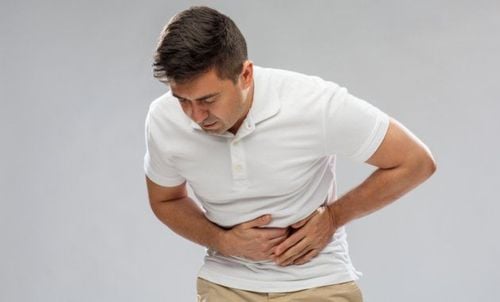This is an automatically translated article.
What is Bluecose 100mg, is it a diabetes drug? In fact, Bluecose 100mg is a very popular type 2 diabetes medication with the main ingredient Acarbose.1. What is Bluecose 100mg?
Bluecose 100mg belongs to the group of hormonal drugs, with the main ingredient being Acarbose 100mg. Acarbose has the effect of reducing postprandial blood sugar without increasing blood insulin by reducing the breakdown of carbohydrates into monosaccharides. Acarbose still preserves beta cells and reduces HbA1c levels, triglycerides, and also reduces complications of diabetes.Bluecose 100mg is made in the form of tablets and is only used in the following cases:
Used alone in the treatment of type 2 diabetes to support diet and exercise in patients who cannot control sugar. blood. Used in combination with a sulfonylurea in the treatment of type 2 diabetes as an adjunct to diet and exercise in patients unable to control glycemic control with sulfonylurea or acarbose monotherapy.
2. How to use and dose Bluecose 100mg
Bluecose 100mg is taken orally, take the drug with a sufficient amount of water, should take one tablet whole before eating or chew the medicine with the first piece of food to lower blood sugar after eating.
Bluecose 100mg dose prescribed by the doctor is suitable to the tolerability and response of each patient. Treatment should ensure that at the lowest dose, the drug helps to reduce postprandial blood sugar and the hemoglobin glycosylate level returns to near-normal or normal values, either in single or in combination therapy.
It is necessary to measure the blood glucose level 1 hour after eating during the administration of Bluecose 100mg and adjust the dose to assess the possibility of treatment response as well as the minimum effective dose. Next, patients need to be monitored for hemoglobin glycosylate every 3 months to assess long-term blood sugar.
Bluecose drug 100mg is only used in adults with the recommended initial dose of 1 tablet / time, 1-2 times / day. Then increase the dose to 3 times/day. Do not increase the dose if the patient is experiencing complications due to diet, or it is necessary to reduce the dose. The maximum dose should not exceed 200mg/time and 3 times a day. Patients with renal failure with creatinine clearance above 2mg/dl should not take the drug.
Overdose of Bluecose 100mg drug occurs when used simultaneously with food and drink containing carbohydrates, the patient will have diarrhea, flatulence and abdominal distension. In this case, the patient should avoid consuming foods and drinks containing carbohydrates for 4-6 hours afterwards.
3. Side effects of Bluecose 100mg
Bluecose 100mg may cause some unwanted side effects, mainly on the digestive system. Side effects of the drug appear with the frequency as follows:
Common: Abdominal pain, abdominal distension, nausea, abdominal bloating, diarrhea, defecation. Uncommon: rash, pruritus, abnormal liver function. Rare: Hepatitis , jaundice. When continuing to take Bluecose 100mg, the gastrointestinal side effects will be reduced, especially when reducing the amount of sugar consumed from food. To limit these side effects, patients should take the drug with the lowest dose first and gradually increase the dose until the desired therapeutic effect is achieved.
Special note not to take antacids to treat side effects to the digestive system after taking Bluecose 100mg. It is best for the patient to tell the doctor about these side effects and go to the medical facility soon to be checked.
4. Some notes when taking Bluecose 100mg
Do not use Bluecose 100mg drug in people with hypersensitivity to the ingredients of the drug, people with intestinal ulcers or diseases with increased abdominal pressure, people with liver failure or increased liver enzymes, people with hypoglycemia or diabetes ketoacidosis, pregnant and lactating women.
During the course of taking Bluecose 100mg, the patient should be checked and monitored for liver transaminases. Concomitant use of Bluecose 100mg with insulin or sulfonylurea diabetes drugs may cause hypoglycaemia. To treat hypoglycemia, patients need to take orally instead of sucrose so that the drug does not inhibit glucose absorption. For diabetic patients with ketoacidosis with complications of coma, Bluecose 100mg drug is not effective when used alone, the patient must use insulin for treatment. Bluecose 100mg may interact with the following drugs and foods: cause abdominal discomfort or diarrhea if taken with food containing sucrose (cane sugar) because of the carbohydrates fermenting in the colon; interfere with iron absorption or metabolism if used with drugs, iron-containing products; Increased hypoglycemic effect when used in combination with sulfonylurea or biguanide antidiabetic drugs. Avoid concomitant use of Bluecose 100mg with antacids, intestinal adsorbents and digestive enzymes, cholestyramine, because the effect of the drug is reduced. It is best that before taking the drug, the patient needs to provide or tell the doctor the status of using the drug (current or previous). The use of Bluecose 100mg is to lower blood sugar after eating without increasing insulin in the blood. Therefore, the drug is used alone and in combination with drugs in the treatment of type 2 diabetes as an adjunct therapy for patients, in addition to diet and exercise.
Please dial HOTLINE for more information or register for an appointment HERE. Download MyVinmec app to make appointments faster and to manage your bookings easily.













